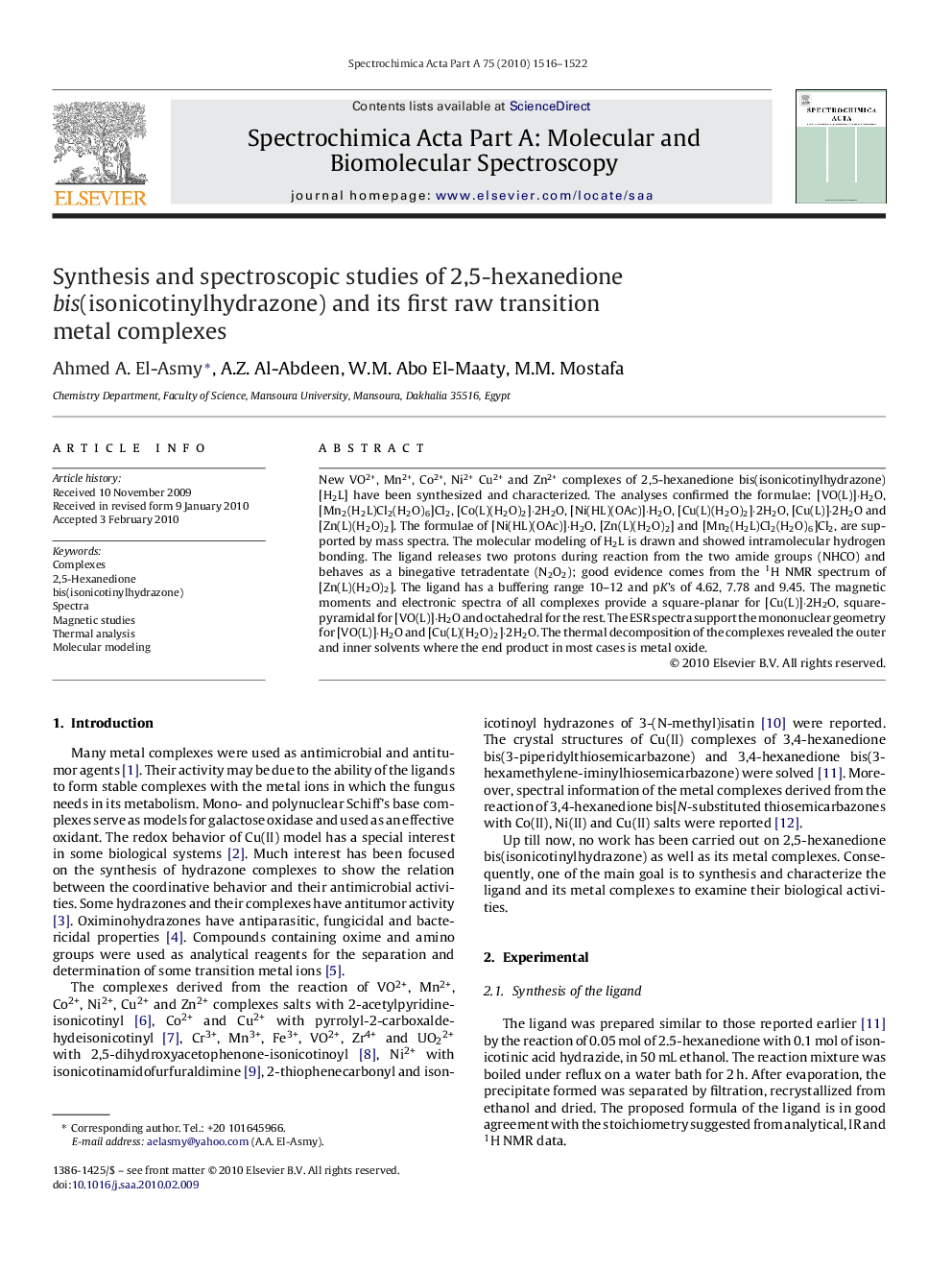| Article ID | Journal | Published Year | Pages | File Type |
|---|---|---|---|---|
| 1232552 | Spectrochimica Acta Part A: Molecular and Biomolecular Spectroscopy | 2010 | 7 Pages |
New VO2+, Mn2+, Co2+, Ni2+ Cu2+ and Zn2+ complexes of 2,5-hexanedione bis(isonicotinylhydrazone) [H2L] have been synthesized and characterized. The analyses confirmed the formulae: [VO(L)]·H2O, [Mn2(H2L)Cl2(H2O)6]Cl2, [Co(L)(H2O)2]·2H2O, [Ni(HL)(OAc)]·H2O, [Cu(L)(H2O)2]·2H2O, [Cu(L)]·2H2O and [Zn(L)(H2O)2]. The formulae of [Ni(HL)(OAc)]·H2O, [Zn(L)(H2O)2] and [Mn2(H2L)Cl2(H2O)6]Cl2, are supported by mass spectra. The molecular modeling of H2L is drawn and showed intramolecular hydrogen bonding. The ligand releases two protons during reaction from the two amide groups (NHCO) and behaves as a binegative tetradentate (N2O2); good evidence comes from the 1H NMR spectrum of [Zn(L)(H2O)2]. The ligand has a buffering range 10–12 and pK's of 4.62, 7.78 and 9.45. The magnetic moments and electronic spectra of all complexes provide a square-planar for [Cu(L)]·2H2O, square-pyramidal for [VO(L)]·H2O and octahedral for the rest. The ESR spectra support the mononuclear geometry for [VO(L)]·H2O and [Cu(L)(H2O)2]·2H2O. The thermal decomposition of the complexes revealed the outer and inner solvents where the end product in most cases is metal oxide.
